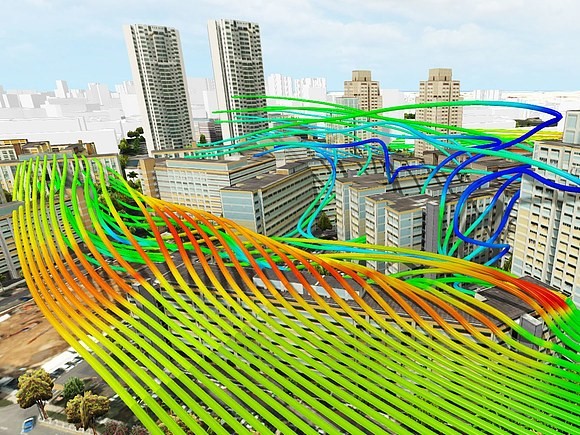Reading
You are going to read the article about 3-D model of Singapore, written by a BIM and construction ICT journalist Ryota Ieiri. Check the meaning of the highlighted words in the glossary if necessary.
A Singaporean building information modeling project could revolutionize urban planning.

Singapore is moving forward with an ambitious project to create a digital 3-D model of the entire city-state, which it wants to use to build a database with information on buildings, civil infrastructure and a great deal more. The system will be available to anyone in Singapore for a variety of uses, from state-level environmental and disaster simulations to street-level planning, and even inspecting floor plans of commercial facilities.
Virtual Singapore is a "digital twin" of the real one, said George Loh, director of the National Research Foundation's programs directorate, which is leading the project. The Singapore Land Authority and the Infocomm Development Authority are working with the foundation to implement the 73 million Singapore dollar ($53 million) project.
Between 2013 and 2015, Singapore phased in mandatory submission of BIM models for all new building projects. With Virtual Singapore, the city-state is creating an enormous BIM model that will incorporate everything from buildings to roads and other civil infrastructure, all the way down to trees.
Loh expects to see Virtual Singapore used in many different ways by private citizens, government agencies, businesses and researchers. He envisions the 3-D model having applications in simulations, and in managing infrastructure and the supply of energy. At the level of individual structures, it has several potential uses, including examining building materials and designs. Planners might study how the wind blows through the streets, or use it for neighborhood construction projects such as basketball courts.
At first glance, Virtual Singapore resembles familiar software like Google Earth. But the 3-D model of Singapore will incorporate "semantic attributes," so that clicking on a building, for example, brings up a host of information in addition to the address -- details on the building materials, ventilation system, the amount of direct sunlight it gets each day and so forth. Selecting the area around the building reveals data on perimeter, area and height. Even the number of parking spaces and trees is at one's fingertips.
Virtual Singapore is based on the 3DEXPERIENCity platform created by French software company Dassault Systemes, but the 3-D model incorporates a variety of other applications and systems.
The data in Virtual Singapore will be stored in various levels of detail. The levels of Virtual Singapore will be two levels more coarse than what BIM models typically have. The broadest level might show the geography of Singapore, the next level down would display buildings in a single city block, the next a single building, the next the actual exterior view of the building and, at the smallest scale, the interior of the building.
As a faithful digital recreation, Virtual Singapore can help city planners and support business. The "3 V's" -- virtual, visual and venture -- are the main objectives and functions the 3-D platform aims to offer.
If all goes well, citizens will be able to use Virtual Singapore to explore commercial facilities using smartphone apps. Wireless communications providers will be able to analyze how radio waves bounce around to determine the best locations for cellphone towers. Developers will be able to model crowd dynamics to ensure people get where they are going smoothly.
The software will enable simulations of disaster evacuations, emergency rescues, and vehicle and pedestrian traffic. It will let users see which routes are best for people in wheelchairs in shopping malls and help track down people with dementia who have wandered off. The potential uses for Virtual Singapore are endless. (This article was first published in the online version of Nikkei Architecture on March 4).
